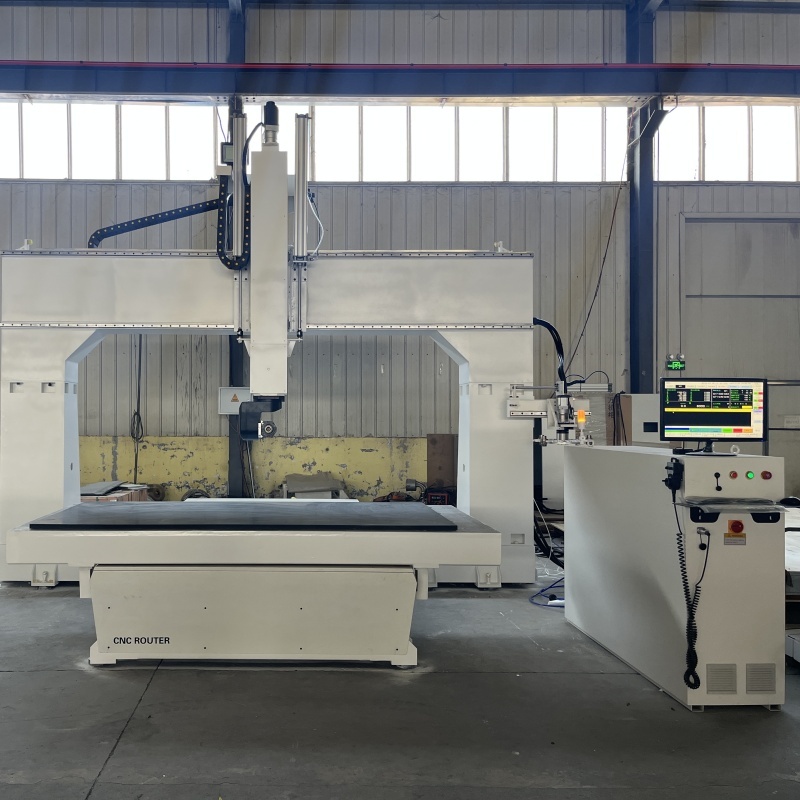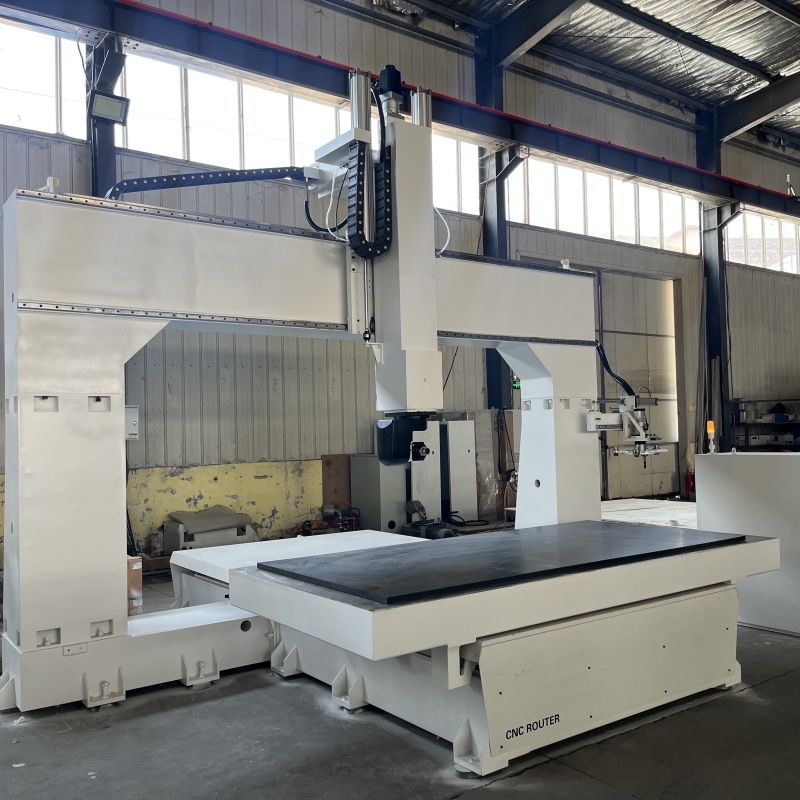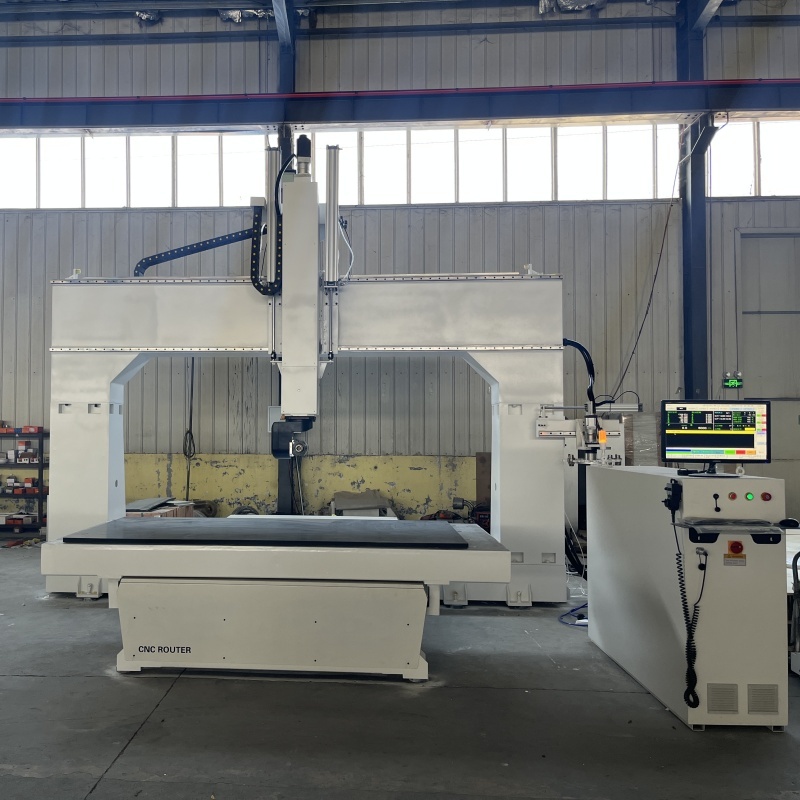In the traditional woodworking field, craftsmen rely on exquisite skills to carve out complex woodworking works, but efficiency and precision are always limited by manpower and basic equipment. With the wave of intelligent manufacturing sweeping across the world, five-axis woodworking machines have emerged, bringing a new development pattern to the woodworking industry with subversive technological innovation.


The core of the five-axis woodworking machine lies in its unique five-axis linkage system. The X, Y, and Z axes realize linear motion and are responsible for the up and down, left and right, and front and back movement of the wood; the A and C axes are responsible for rotation tasks, the A axis can tilt the workpiece, and the C axis can drive the workpiece to rotate. The five axes work together to allow the tool to cut into the wood from any angle, breaking through the limitation that traditional three-axis equipment can only process in planes or simple three-dimensional dimensions. This technical principle gives the five-axis woodworking machine a powerful surface processing capability, whether it is the wavy surface on furniture or the winding vine texture in wood carving crafts, it can be accurately presented.
In actual application scenarios, the five-axis woodworking machine shows incomparable advantages. In the field of furniture manufacturing, it can quickly complete the processing of complex mortise and tenon structures, so that the fit of furniture parts reaches the micron level, which not only improves the overall stability of the furniture, but also allows the traditional craftsmanship essence of Chinese furniture to be digitally inherited; in the production of handicrafts, the five-axis woodworking machine can transform the designer’s wild three-dimensional creativity into reality, from lifelike animal-shaped wood carvings to rich relief works, its processing accuracy and efficiency far exceed handmade. In addition, in the production of customized products such as wooden door carvings and stair columns, the five-axis woodworking machine can quickly respond to customers’ personalized needs through the import of three-dimensional models, greatly shortening the production cycle.

Compared with traditional woodworking equipment, the advantages of the five-axis woodworking machine are multi-dimensional and significant. In terms of efficiency, it realizes multi-process integration, and can complete multiple operations such as cutting, engraving, and milling in one clamping, which increases production efficiency by 3-5 times; in terms of precision, the CNC system and high-precision transmission device ensure that the processing error is controlled within a very small range, and the product qualification rate is greatly improved; in terms of cost control, automated operation reduces manual dependence, while precise processing reduces material loss, and long-term use can effectively reduce the overall cost.
Looking to the future, the development prospects of five-axis woodworking machines are bright. With the deep integration of artificial intelligence and big data technology, five-axis woodworking machines will have more intelligent autonomous decision-making capabilities, and can automatically optimize processing parameters according to factors such as wood material and humidity; after combining with the Internet of Things, the equipment can realize remote monitoring and fault warning, further improving the continuity and stability of production. In addition, the concept of green manufacturing will promote the continuous upgrading of five-axis woodworking machines in terms of energy saving and consumption reduction, and dust pollution reduction, helping the woodworking industry to move towards a more environmentally friendly and efficient direction.
With advanced technology and excellent performance, the five-axis woodworking machine has become the core driving force for the intelligent transformation of the woodworking industry. It not only reshapes the production model of wood processing, but also opens up unlimited innovation possibilities for the industry. In the future, the five-axis woodworking machine will continue to use technology as a pen to write a new chapter of intelligent manufacturing on wood and promote the woodworking industry to a higher stage of development.



